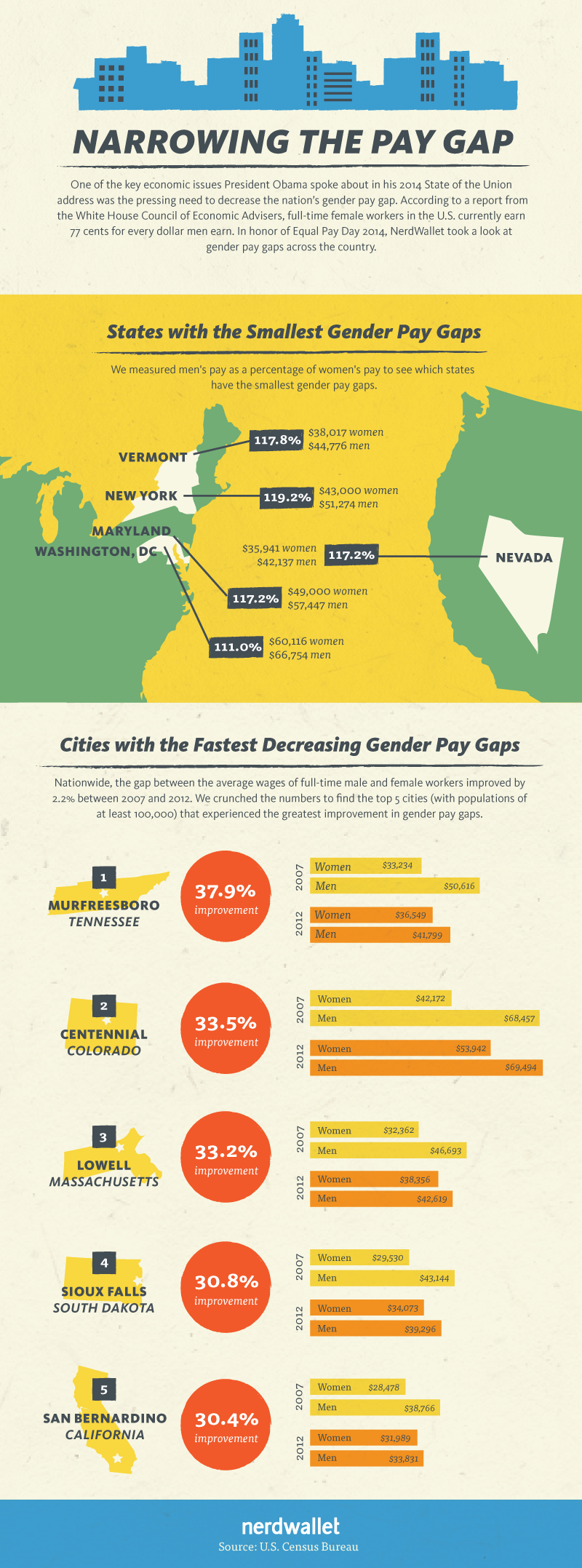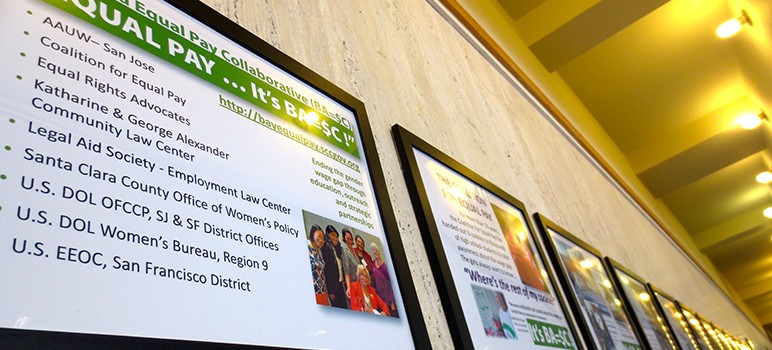Though it boasts some of the highest median salaries in the nation, Silicon Valley is also home to one of the greatest income disparities between men and women.
Only one other U.S. city—a Florida town of 100,000—reported a greater jump in its gender pay gap than the city of Santa Clara, according to a new study by financial analysis site Nerdwallet.com, which analyzed U.S. Census data between 2007 and 2012.
By 2012, the median annual income for men working full-time in the South Bay city came out to $91,471 compared to $56,996 for women, partly because the financial and tech industries that drive the region rank as some of the worst for pay equity. That’s a 32.2 percent jump in the pay gap sine 2007, the study says.
And as noted by the Silicon Valley Business Journal, that disparity grows along with the overall income inequality between rich and poor—all while the economy supposedly rallies.
To highlight the worsening problem of pay parity during what’s deemed "Equal Pay Awareness Month," the Santa Clara County Office of Women’s Policy has posted exhibit in the breezeway at the County Government Center. A table with brochures about the problem accompanies a gallery of facts about the differences in men and women’s earnings and the effect that inequity has on the community.
“The exhibit highlights real life examples of wage discrimination and the agencies that step in to bring justice to the victims,” county spokeswoman Gwen Mitchell said.
Nationally, about 40 percent of mothers are the primary breadwinners in their households, according to the county. Two-thirds are significant earners, bringing home a large portion of the family’s income. College-educated women working full-time earn $500,000 less than their male peers over the course of a lifetime.
Though women comprise about half of the U.S. labor force, they still make just 77 cents for every dollar men earn in both the public and private sector.
The disparity worsens for women of color, especially for Latina women who make only 53 cents to every dollar a white man earned in 2012. And African American women took home 64 cents for every dollar of a white man’s pay. That yawning gap translates to lost wages and smaller pensions and Social Security benefits. It means women are disproportionately affected by rising housing costs. And this is a half-century after the Equal Pay Act.
A free panel discussion about wage and gender discrimination will take place on April 17, the final day of the exhibit. Speakers include guests from the Legal Aid Society-Employment Law Center, Equal Rights Advocates, Equal Opportunity Employment Commission and other organizations dedicated to eliminating the gender pay gap.
Esther Peralez-Dickmann, director of the county Office for Women's Policy, said the whole community loses out when women make less money. Experts predict that women's consumer spending will rise to $28 trillion in the next few years, she said, adding that investing in women will reduce poverty and stimulate the economy.
"Women are a formidable and growing economic force and represent the largest market opportunity in the world," Peralez-Dickmann told San Jose Inside. "There is overwhelming evidence that when women have access to disposable income, they tend to use it for the betterment of their families and communities."
Panelists at the county sponsored event will discuss pay parity in the public and private work force, explore legal solutions and talk about long-term strategies and best practices for employers. They will also talk about ways for women to negotiate an initial salary, how to ask for a pay increase, the effect of bias in the workplace and other issues that lead to the wide-ranging difference between men and women’s paychecks.
WHAT: Panel on pay parity
WHEN: 10am to noon April 17
WHERE: County Government Center, Isaac Newton Senter Auditorium, 70 W. Hedding St., San Jose
COST: Free
SIGN UP: Click here to register
INFO: Julie Ramirez, Office of Women’s Policy, 408.299.5135



This is a bad graph..
In every example, except Colorado the gap shrank because mens salaries were reduced. The woman’s salaries didn’t really go up that much.
It’d be a better graph if the womens salaries rose to the same levels as mens salaries.
How’s the gender gap look among people employed to waste the taxpayers’ money, such as the author of this study?